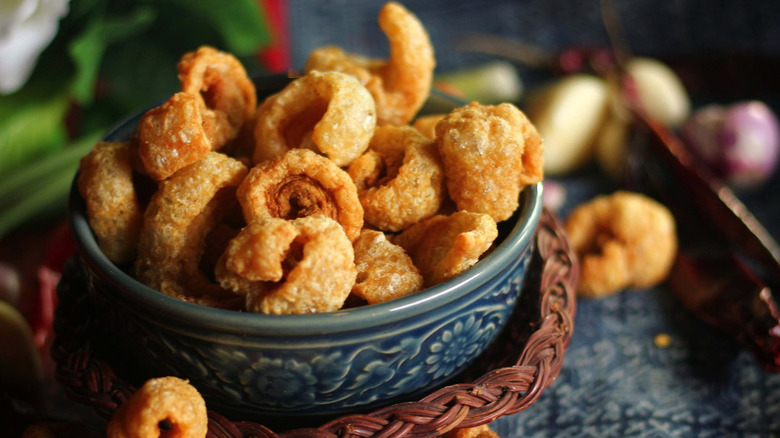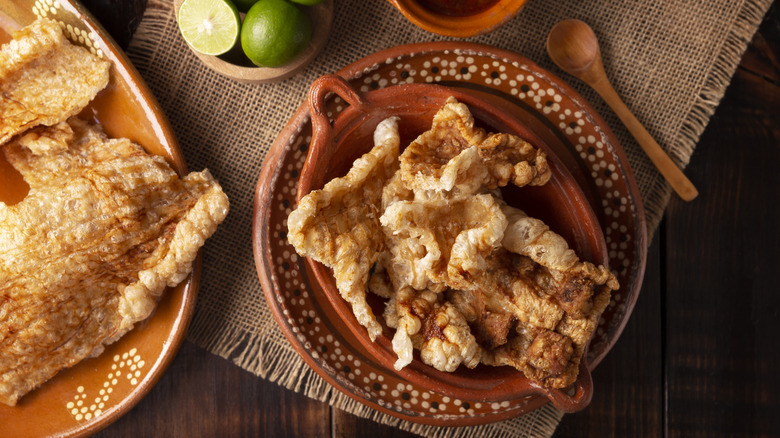Chicharrones Vs Pork Rinds: What's The Actual Difference?
During your last trip down the chip aisle of your local grocery store, you may have noticed a bag of something you'd call pork rinds labeled "chicharrones." And depending on where you're from and your familiarity with Latin cuisine and linguistic terminology, you may have assumed "chicharrones" is just the Spanish word for pork rinds. But that's not quite right.
Chicharrones are, well, difficult to explain. That's because the method depends partially on which Latin American country you're from and partially (mostly) on how your mom did it. And while pork is a popular choice, especially in the U.S., you can make chicharrones from pretty much any meat, specifically the fat thereof. Many cooks gently boil that fat until it's tender (others skip that part), then fry it until it's crispy. You can serve it with condiments like guacamole or put it into dishes like tacos or burritos.
Pork rinds are only made of the skin of the pork, usually the belly. As with chicharrones, there are many ways to make them. You can also boil the pork belly, then scrape off the fat. Or you can cut it off, though there may be some fat left on it. Dehydrating it before frying it can help it puff up into that classic bagged pork rind, though that's optional. The ideal pork rind is crunchier than a chicharrón, but they are different in the same ways pork rinds, cracklins, and fatback are different.
Why people confuse chicharrones and pork rinds
Some might say pork rinds are made from fried pork skin and chicharrones are made from fried pork belly (usually). But in a very literal sense "chicharón" means the same thing as pork rind because that's what we call it and that's how language works. And that's fine, but it's also confusing. It helps to do a little linguistic spelunking.
For example, in Mexico, street vendors sell "chicharrones de harina," or fried wheat chips. And in the Philippines, you can sample chicharrones bulaklak, battered and deep-fried pork abdominal wall. That's because the word "chicharrón" comes from the Spanish word "achicharrar" or "chicharrar," which like the English "crack" or "cracklin," is an onomatopoeia of the sound things make when they fry. So "chicharrón" is just a way of saying something is fried.
And when it comes to pork, many cooks leave the skin on the pork belly when they cook chicharrones de cerdo (pork) too. So when they put it in the pan to fry, much of the fat renders, leaving behind a slab of skin that looks a lot like pork rinds to the casual observer. Whatever you call them and however you make them, both chicharrones and pork rinds are delicious, and it may be worth your time to make both. You know, for science.

